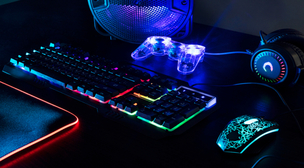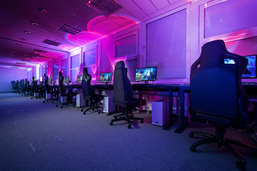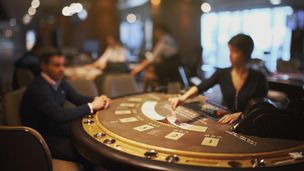The Components That Power Live Casino Gaming

Live casino dealers compare favorably with those in land-based casino floors
Live dealer casino gaming has revolutionized the world of online casinos. Although video table games such as blackjack and roulette are by no means a thing of the past, and many gamers appreciate the speed and efficiency of computerized action, live casino tables have added an extra dimension to many of the world’s biggest iGaming operators.
In terms of software, there are plenty of online casino pioneers that have branched out into the immersive world of live casino gaming. Household names like NetEnt, Playtech, and Microgaming, who have historically focused exclusively on delivering the best online slot titles, have invested heavily in live casino technology. Their collective vision is to try to replicate the authenticity of a land-based casino experience, wherever you are.
Then, there are established brands like 888 that have been in existence for over two decades and boast an online casino real money platform has become one of the most reputable places to sample the latest live casino games. It actually became one of the first online casino operators to be fully licensed in New Jersey back in 2013, and it continues to win awards for its industry-leading software that made live games more popular.
So, if you’re yet to experience the engaging world of live dealer casino games, this article outlines the key components that go into a fully functioning live casino studio.
High-definition cameras
One of the most integral aspects of delivering a first-class live casino game is a studio’s use of cameras. High-definition (HD) cameras are typically used to broadcast crystal-clear imagery to players in real-time, regardless of device or screen size.
It’s not just the technology behind the cameras that makes live dealer games so engaging, it’s the placement of the cameras too. Most live casino table games have multi-camera angles, taking players closer to the action on the tables and wheels. Some angles are even more immersive than the view you can get when playing on the casino floor of a land-based casino.
Game Control Units (GCUs)
Without a GCU, it would not be possible to:
a) broadcast the table game in real-time
b) encode the video for player security
c) enable dealers to manage the ongoing action.
Each live casino table has a GCU fitted beneath it, which is no bigger than the size of a shoebox. All actions a dealer makes at the table are scanned into the GCU built into the table. For instance, the dealing of cards to players in blackjack or baccarat. The GCU also helps to pinpoint the winning numbers and bets placed on roulette tables, which is essential in such a high-load environment where players come and go 24/7.
Optical Character Recognition (OCR) technology
GCUs work in tandem with another clever piece of technology known as OCR. This software is designed to electronically process and convert visual or printed text into an encoded format that can be displayed on-screen. When the dealer deals the cards to players in blackjack, they scan them into the GCU and the OCR technology records the suit and value of the card and overlays it on-screen for the player.
OCR technology, therefore, puts the game data at the fingertips of players just as quickly as you would have it when sat in a land-based casino. OCR technology is also being utilized in other walks of life too. It is proving particularly effective in helping to digitize written texts into machine-readable data. In the UK, the iconic British Library has invested heavily in OCR to future proof its historic texts.
Studio monitors
It’s also important for the live dealers to see what their players can view on-screen too. With most live casino tables, there will be a studio monitor placed above or alongside the HD cameras. The dealers will use the monitors to maintain the general flow of the game, inviting players to act on their hands or bets. Through the monitors, dealers can also keep track of new players arriving at the tables, giving them a chance to welcome them and guide them through the process if they’re new to live casino action.
Professionally trained dealers

Live casino dealers compare favorably with those in land-based casino floors
Aside from the state-of-the-art technology, it’s also important to acknowledge the importance of the dealers themselves. Each dealer is professionally trained to manage table games and adhere to the standardized rules of the casino they work for. These dealers are known for their friendly, social nature.
They are encouraged to foster engagement with and between players who have live chat boxes overlaid on-screen, making it easy to type and ask questions wherever necessary. As live casinos continue to grow in popularity around the world, the value of multilingual trained dealers has risen too, with most live casinos now operating live-streamed table games in a host of languages.
The live studio itself
The studio settings for these live casino games shouldn’t be ignored either. With live casinos offering a growing variety of themed live casino “rooms”, the operators must invest in furnishing the studios to suit the mood and tone. For instance, the high-limit live casino tables have more elegant, indulgent surroundings and the Asian-themed live casino tables are typically furnished in red, which is perceived to represent prosperity and good fortune in Asian culture.
Little did you know how much goes into operating slick live dealer casino experiences. Although it requires considerable investment from online casino operators, the growing revenues and player numbers is the justification they need to forge ahead with this latest form of immersive gaming online.
To read the latest guides, news, and features you can visit our Other Game Page.







